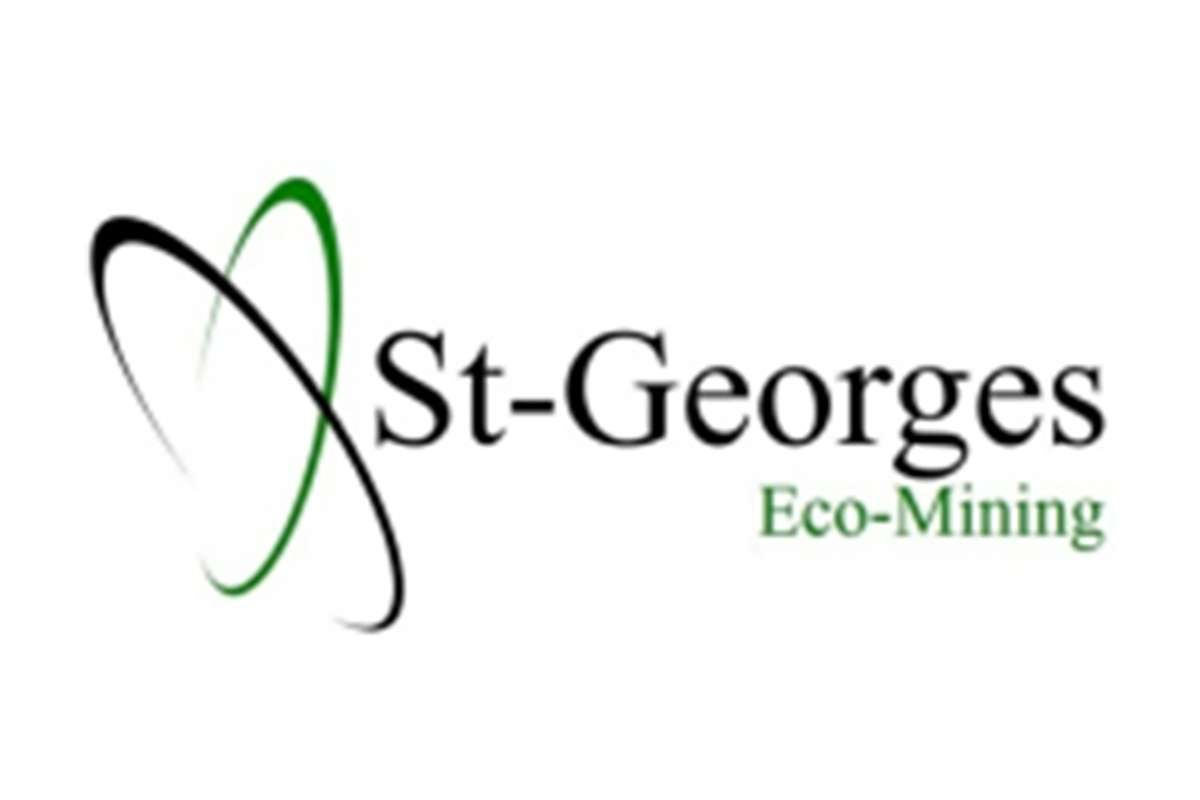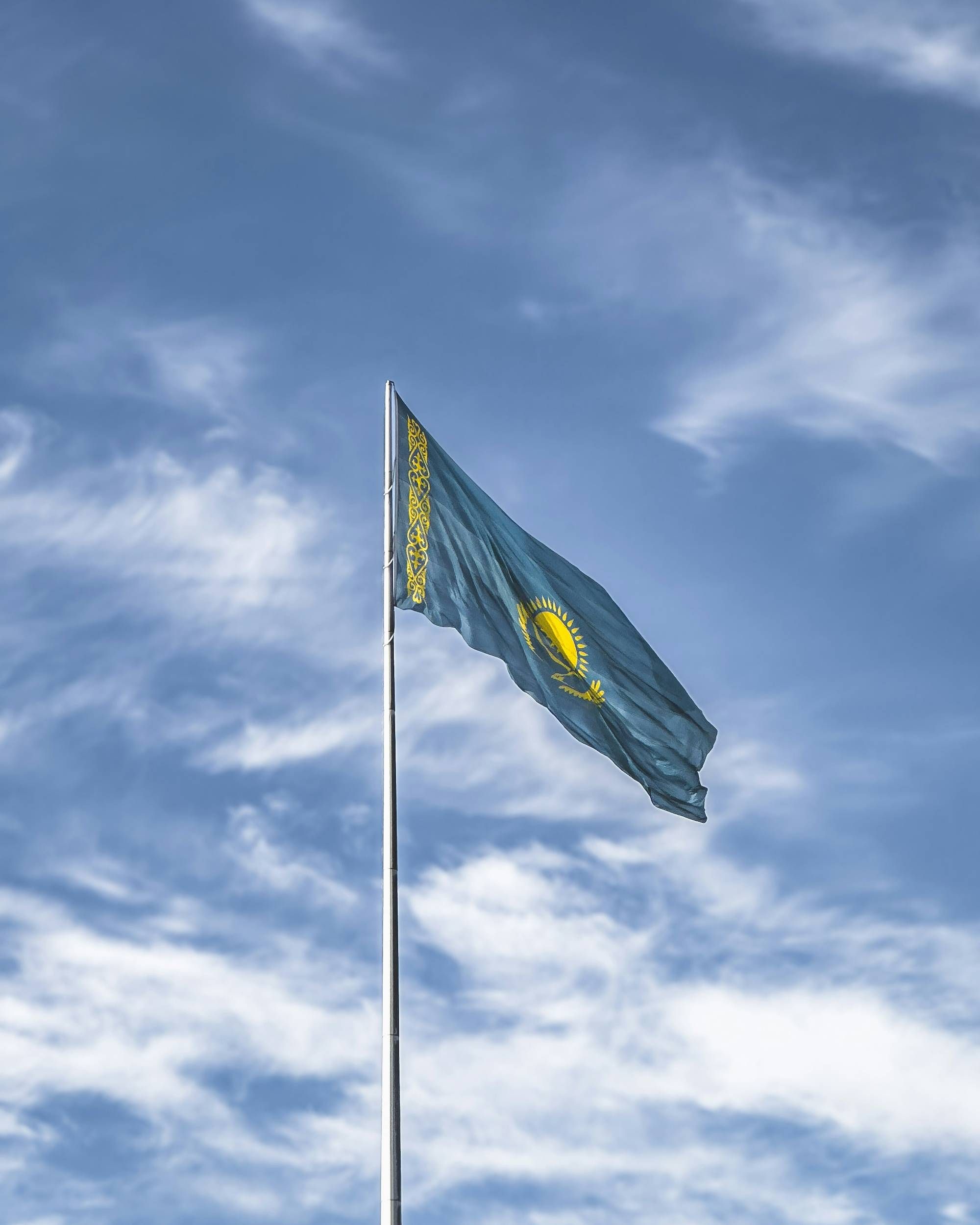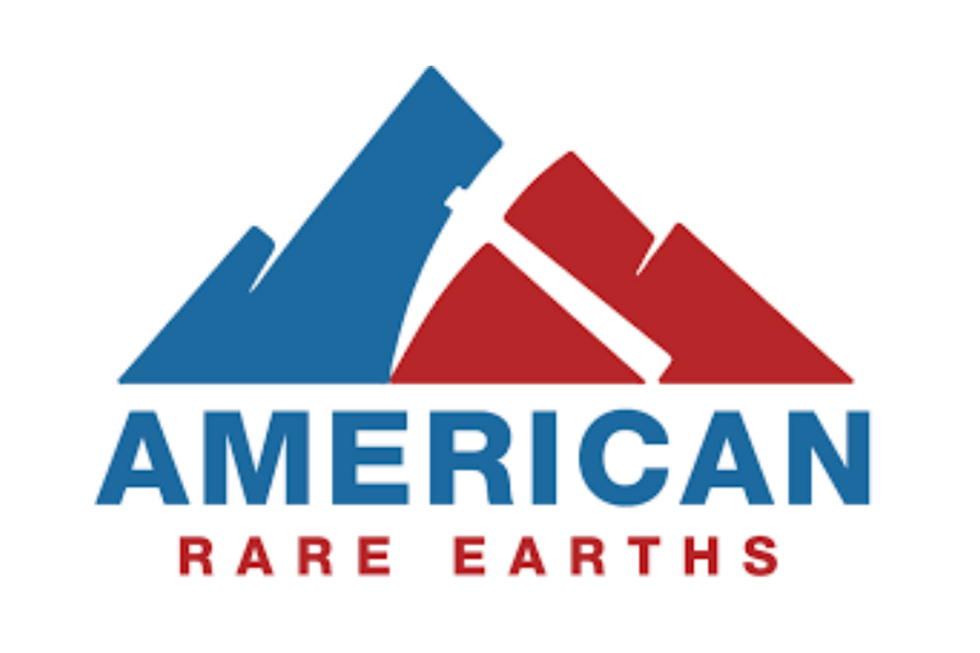
- NORTH AMERICA EDITIONAustraliaNorth AmericaWorld
March 26, 2025
St-Georges Eco-Mining Corp. (CSE: SX) (OTC: SXOOF) (FSE: 85G1) announces that it has received preliminary results from surface sampling and early-stage mineralogical analysis on its Notre-Dame Critical Minerals Project, located within the Nitassinan, the traditional and ancestral territory, of the Innu First Nation of Mashteuiatsh in Québec. The results have confirmed the presence of niobium, tantalum, gallium and rare earths in multiple samples collected from a channel at surface and select drill intervals.
These results support the Company’s initial exploration hypothesis and reinforce the project's growing potential to host valuable technology and energy transition metals. The discovery stems from detailed earlier geochemical assays conducted over the past several months. The past and recent sampling reveal consistent anomalous values of niobium, tantalum, gallium and other rare earth minerals occur in multiple targets throughout the Notre-Dame Project. This new data confirms the presence of these critical elements in concentrations that warrant further investigation and support expanding exploration activities in the upcoming field season.
"These initial findings validate our ongoing efforts on the Notre-Dame Project and underscore the potential significance of this underexplored region," said Herb Duerr, CEO of St-Georges Eco-Mining. “(…) it is particularly encouraging to identify a carbonatite body that appears to extend at least 75 meters in length and up to 20 meters in width, based on limited early drilling. Even more significant is the surface mineralization, which can be traced consistently to depths ranging from 16 to 36 meters. Notably, every drill hole targeting the lens observed at surface successfully intersected the expected geological structure and encountered niobium mineralization at depth, with several intercepts over meaningful widths. Drilling has outlined 75 meters of strike along a shallow-dipping system that remains open at depth and begins virtually at surface (…)."
The company will initiate additional fieldwork this spring, including trenching, detailed mapping, and expanded sampling, to delineate mineralized zones and better understand the geological controls behind these critical metal occurrences. Further metallurgical testing will also be undertaken to assess the extractability of niobium, tantalum, gallium and the suite of rare earth minerals under the company’s eco-friendly approach.
The mapping, drilling, and sampling works carried out at the Notre-Dame Project in 2024 confirmed the presence of a carbonatite dike measuring 75 meters by 20 meters that is open in several directions and at depth, inside which anomalous REE, and Nb-Ta elements were found. Some analysis triggered the analysis overlimit threshold and will be sent to the labs for further analysis. The Company is providing the available preliminary results in the table below.
The Company’s surface sampling, taken from one channel of 8 meters at surface, yielded the following results with the lower number considered as a background value on the project:
Niobium (Nb) – from 100 to 2,360 ppm (143ppm to 3,376 ppm or 0.3376% of niobium pentoxide (Nb₂O₅)
Tantalum (Ta) – from 10 to 60 ppm
Gallium (Ga) – from 15 to 48 ppm
Total Rare Earth (TREEs) – from 200 to 4,000 ppm
The exploration drilling campaign yielded the following results in the table below on one of the targeted zones adjacent to the project access road. These values contained intervals of Nb that exceeded the assay detections limit of 2,500 ppm (in excess of 3,578ppm or 0.3578% of niobium pentoxide or Nb₂O₅)
Drill Hole # | From (m) | To (m) | Interval (m) | Nb ppm* | Ta ppm | Ga ppm | TREE ppm |
24-02 | 20.0 | 24.0 | 4.0 | >2,215** | 103.0 | 15 | 1,390 |
24-04 | 19.0 | 20.0 | 1.0 | 1,085 | 38.0 | 19 | 578 |
24-05 | 13.4 | 15.0 | 1.6 | 335 | 11.0 | 13 | 3,023 |
and | 15.0 | 21.0 | 6.0 | 845 | 22.0 | 15 | 1,008 |
24-06 | 13.0 | 16.0 | 3.0 | 470 | 18.0 | 9 | 1,320 |
and | 18.0 | 20.0 | 2.0 | 1,240 | 30.0 | 18 | 786 |
24-09 | 47.0 | 50.0 | 3.0 | >1,907** | 106.0 | 24 | 449 |
24-12 | 7.3 | 8.2 | 0.9 | 1,250 | 36.0 | 17 | 1,842 |
24-13 | 36.0 | 37.0 | 1.0 | 715 | 6.0 | 21 | 1,199 |
24-14 | 4.0 | 6.0 | 2.0 | 1,405 | 35.4 | 18 | 1,069 |
Channel-1*** | 0.0 | 8.0 | 8.0 | 670 | 17.0 | 15 | 1,217 |
included | 2.0 | 3.0 | 1.0 | 2,124 | 39.2 | 25 | 1,615 |
* | Geochemistry done via Li Borate Fusion Method with ICP-MS finish (ALS, ME-MS81) | ||||||
** | Assay value of some samples is greater than 2500 ppm Nb (over limit) and results could increase or decrease after further analysis | ||||||
*** | Mineralization in channel sampling conducted at surface intersected the same carbonatite at depth via drilling |
DRILL HOLES | |||||||||
Hole Name | UTM-X* | UTM-Y | Elev | Az(°) | Dip (°) | Length | Qty | From | To |
NDL24-02 | 682578E | 5441883N | 224 | N225 | -45 | 81 | 24 | L273389 | L273412 |
NDL24-03 | 682578E | 5441883N | 224 | N225 | -70 | 48 | 26 | L273363 | L273388 |
NDL24-04 | 682578E | 5441883N | 224 | N265 | -45 | 78 | 22 | L273341 | L273362 |
NDL24-05 | 682578E | 5441883N | 224 | N265 | -70 | 51 | 26 | L273315 | L273340 |
NDL24-06 | 682578E | 5441883N | 224 | N290 | -45 | 87 | 21 | L273294 | L273314 |
NDL24-07 | 682598E | 5441843N | 218 | N215 | -45 | 60 | 25 | L273269 | L273293 |
NDL24-08 | 682598E | 5441843N | 218 | N310 | -45 | 150 | 30 | L273239 | L273268 |
NDL24-09 | 682551E | 5441882N | 219 | N60 | -45 | 54 | 51 | L273188 | L273238 |
NDL24-10 | 682551E | 5441882N | 219 | N60 | -60 | 30 | 0 | No sample taken | |
NDL24-11 | 682551E | 5441882N | 219 | N140 | -38 | 21 | 13 | L273175 | L273187 |
NDL24-12 | 682564E | 5441874N | 218 | N315 | -45 | 54 | 13 | L273162 | L273174 |
NDL24-13 | 682564E | 5441874N | 218 | N50 | -45 | 69 | 50 | L273112 | L273161 |
NDL24-14 | 682564E | 5441874N | 218 | N235 | -45 | 51 | 11 | L273101 | L273111 |
Quality Control
An 8-meter surface channel was cut directly above the mineralized carbonatite intersected in drilling. The channel was sampled at 1-meter intervals, with cuts 20 cm deep and 2 cm wide. Each sample was geo-referenced, described, tagged, sealed, and placed in identified transport bags. These were securely shipped to Magnor Exploration Inc.’s warehouse in Saguenay, Québec, and then forwarded to ALS Laboratories for analysis. No company-inserted standards, blanks, or duplicates were included. Instead, ALS Laboratories added certified reference materials (OREAS L11, OREAS 232b, and OREAS 243), blanks, and duplicates upon receipt. Results were verified by an ALS geochemist.
All recovered drill core was stored in NQ-sized boxes, labeled, sealed, and securely stored before shipment to Magnor’s facility. The core was logged, measured, and geologically characterized. Selected intervals were tagged, split in half, sealed, and sent via secure transport to ALS Laboratories in Val-d'Or, Québec. Samples were crushed to 70% passing <2 mm, split by riffle splitter, then pulverized to 85% passing <75 µm. Geochemical assays were performed for 36 trace elements (including REEs) by lithium borate fusion with ICP-MS (ME-MS81). A separate analysis using four-acid digestion with ICP-MS was conducted for 60 trace elements, including lithium.
The technical information contained in this report has been reviewed by Jean-Paul Barrette Géo/ P.Geo, is is an independent project geologist and consultant. Mr. Barrette is a member of the Ordre des Géologues du Québec (OGQ, # 619). Mr. Barrette has sufficient experience (40 years) relevant to the style of mineralization and the type of deposit under study and the activity undertaken to qualify as a competent person as defined by NATIONAL INSTRUMENT 43-101, Standards of Disclosure for Mineral Projects. Mr. Barrette carried out several geological reconnaissance works in the Notre-Dame sector and recently made a of compilation of historical works.
ON BEHALF OF THE BOARD OF DIRECTORS
‘Herb Duerr’
HERB DUERR
President & CEO
About St-Georges Eco-Mining Corp.
St-Georges develops new technologies and holds a diversified portfolio of assets and patent-pending Intellectual Property within several highly prospective subsidiaries including: EVSX, a leading North American advanced battery processing and recycling initiative; St Georges Metallurgy, with metallurgical R&D and related IP, including processing and recovering high grade lithium from spodumene; Iceland Resources, with high grade gold exploration projects including the flagship Thor Project; H2SX, developing technology to convert methane into solid carbon and turquoise hydrogen; and Quebec exploration projects including the Manicouagan and Julie (CSM) projects on Quebec’s North Shore, and Notre-Dame niobium Project in Lac St Jean.
Visit the Company website at www.stgeorgesecomining.com
For general information: public@stgeorgesecomining.com
The Canadian Securities Exchange (CSE) has not reviewed and does not accept responsibility for the adequacy or
the accuracy of the contents of this release.
SX:CNX
The Conversation (0)
23 December 2025
ERG's Gallium Deal Puts Kazakhstan on Track to Become World's Top 2 Producer
Kazakhstan could be set to emerge as a key player in critical minerals and low-carbon metals as Eurasian Resources Group (ERG) moves ahead with gallium and iron projects in the country. During President Kassym-Jomart Tokayev’s state visit to Japan, ERG signed a long-term agreement to supply... Keep Reading...
19 December 2025
Australia Joins Global Pact to Secure Critical Minerals Supply Chains
Australia signed a critical minerals declaration at the Pax Silica Summit, alongside six other countries.Present at the December 12 summit were Australia, the US, Korea, Japan, the UK, Singapore and Israel.“The Pax Silica Summit is a United States-led initiative on securing technology supply... Keep Reading...
16 December 2025
Rare Earths Oxide Produced from Halleck Creek Ore-Major Technical Breakthrough
American Rare Earths (ASX: ARR | OTCQX: ARRNF | ADR: AMRRY) (“ARR” or the “Company”) has successfully completed another critical stage in its mineral processing program by producing a mixed rare earths oxide (“MREO”) using the updated preliminary PFS mineral processing flowsheet. HighlightsRare... Keep Reading...
27 November 2025
UK Lists Australia as Potential Critical Minerals Partner
The United Kingdom is looking at building bilateral critical minerals partnerships with various countries, including Australia.On Tuesday (November 25), UK Industry Minister Chris McDonald was said to have mentioned a collaboration with Australia under the AUKUS defence pact, according to a news... Keep Reading...
26 November 2025
Locksley Resources Limited Drill Program Operations Commence at El Campo
Perth, Australia (ABN Newswire) - Locksley Resources Limited (ASX:LKY,OTC:LKYRF) (FRA:X5L) (OTCMKTS:LKYRF) provided a significant operational update for its Mojave Project in California, confirming that the project has now transitioned into the drilling program phase. HIGHLIGHTS - Activities... Keep Reading...
25 November 2025
WA1 Resources’ Luni Niobium Asset Gains Major Project Status
WA1 Resources (ASX:WA1) said its flagship Luni niobium project has received major project status.The designation from the Australian government highlights Luni’s national significance and its potential to strengthen the country's economy. WA1 said major project status also provides case... Keep Reading...
Latest News
Interactive Chart
Latest Press Releases
Related News
TOP STOCKS
American Battery4.030.24
Aion Therapeutic0.10-0.01
Cybin Corp2.140.00




